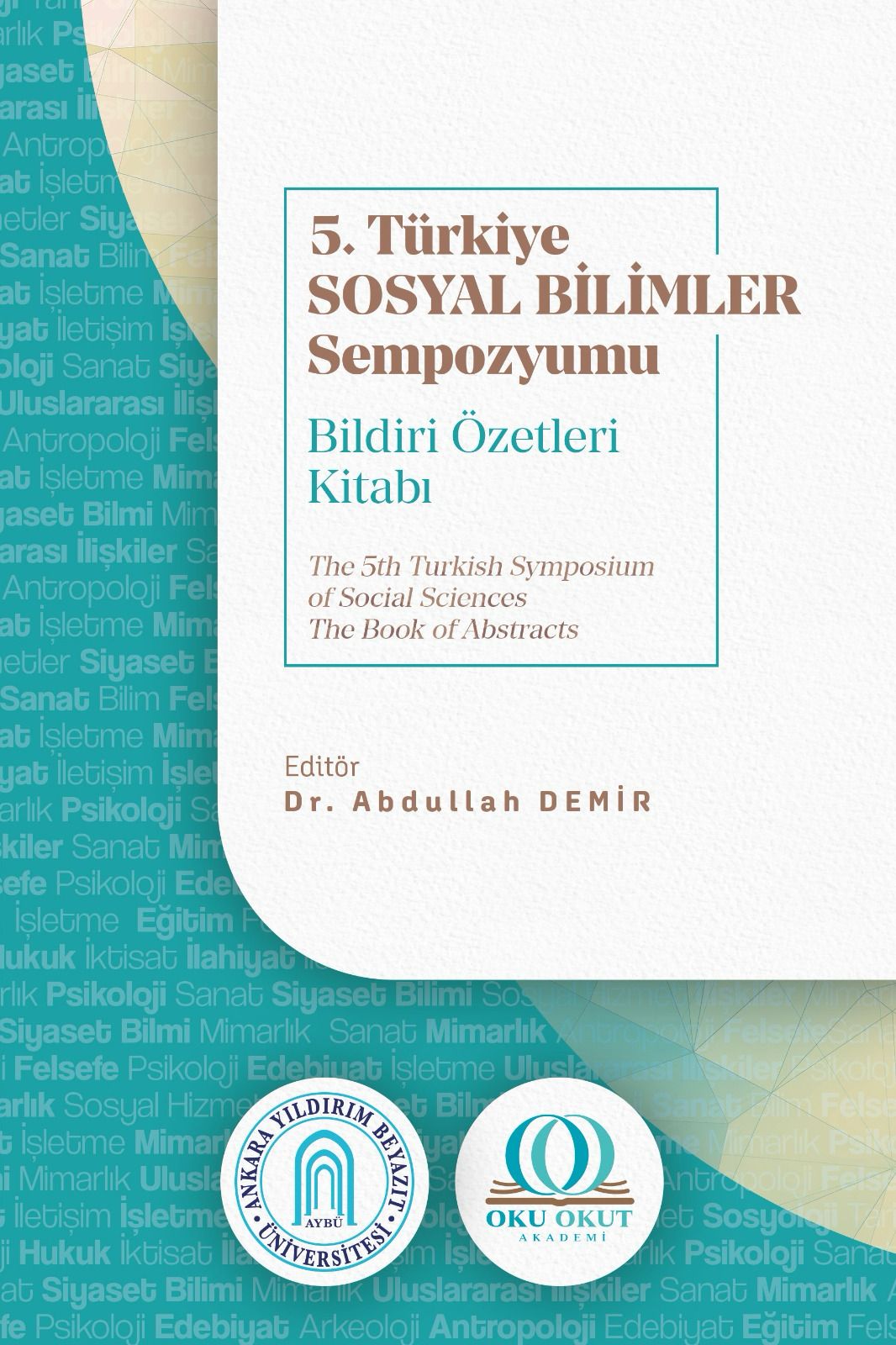The Hearth Structure and Sufi Dimension of the Alevi Tradition in the Context of the Four Doors and Forty Ranks Concept
Dört Kapı Kırk Makam Anlayışı Bağlamında Alevi Geleneğin Ocak Yapılanması ve Tasavvufi Boyutu
In this study the ocak (hearth) structure and the mystical dimension of the Alevi tradition are examined within the framework of the “four doors and forty ranks” doctrine. In recent times, there has been increasing debate concerning the Alevi tradition and its adherents. For instance, it has been observed that there is a prevailing view that the principle of “four doors and forty ranks” exists exclusively in the ocaks and groups identified solely as Alevi today. For this reason it has been deemed important to analyze the understanding of the four doors across all groups in Anatolia and to consider the variations of the “four doors and forty ranks” concept among different Alevi ocaks.
Accordingly, this study explores the manifestations of the “four doors and forty ranks” understanding among various Anatolian groups. Furthermore it presents the diverse interpretations of this concept among different Alevi-labeled ocaks. This diversity highlights the necessity of analyzing each ocak within the context of its own unique reality. This qualitative research has been conducted using a phenomenological approach. The data for the research were obtained through document scanning, through studies of communities belonging to the Alevi tradition and other Muslims, and from interviews with dedes, who were the leaders of the Alevi lodges, in the field. The data obtained was then analyzed.
The study reveals that the central goal in both Sufi schools and Alevi ocaks is to cultivate the insan-ı kamil (Perfect Human Being). In both traditions, the path and stages required to attain this ideal are shaped through the understanding of the four doors. It has been observed that the order of these gates varies across different Sufi schools as well as among Alevi ocaks. For example while some Sufi orders follow the sequence “Sharia, Tariqa, Ma’rifa, Haqiqa” (as in the Qadiriyya), others follow “Sharia, Tariqa, Haqiqa, Ma’rifa” (as in the Mevlevi and Malamati traditions).
Similarly this variation in the sequence of the gates is also evident among Alevi ocaks. For instance the Seyyid Köse Süleyman Ocak follows “Sharia, Tariqa, Ma’rifa, Haqiqa”; the Baba Mansur Ocak follows “Sharia, Tariqa, Haqiqa, Ma’rifa”; and the Dede Garkın Ocak adopts the sequence “Sharia, Tariqa, Haqiqa, and Haqqu’l-Haqiqa.” Despite these differences, this diversity indicates that the ocaks and groups identified as Alevi—regardless of the internal variations among them—should be evaluated within the broader Sufi tradition when the underlying principles are taken into account.
Bu çalışmada “dört kapı kırk makam” anlayışı çerçevesinde Alevi geleneğin ocak yapılanması ve tasavvufi boyutu ele alınmıştır. Son zamanlarda Alevi gelenek ve mensupları hakkında tartışmalar söz konudur. Söz gelimi “dört kapı kırk makam” ilkesinin özellikle günümüzde sadece Alevi ismi ile nitelendirilen ocak ve gruplarda olduğu yönünde bir kanaat olduğu müşahede edilmiştir. Bu sebeple dört kapı anlayışının Anadolu’daki bütün gruplarda incelenmesi; dört kapı kırk makam anlayışının da Alevi ocaklardaki farklılıkları dikkate alarak ele alınması önemli görülmüştür. Bu itibarla “dört kapı kırk makam” anlayışının Anadolu’da varlığını sürdüren gruplardaki yansımaları ele alınmıştır. Ayrıca Alevi nitelemeli ocaklar arasındaki dört kapı kırk makam anlayışının farklı yorumları da ortaya konulmuştur. Zira her ocağın kendi gerçekliği ile ele alınması son derece önemlidir. Nitel bir araştırma olan bu çalışma fenomonolojik yaklaşımla yürütülmüştür. Araştırmanın verileri, doküman taraması yöntemiyle Alevi geleneğe mensup eserler ve diğer Müslüman grupların kaynaklarının incelenmesi ve sahada Alevi ocaklarda erkan yürüten dedelerle yapılan mülakatlardan elde edilmiş; sonrasında elde edilen verilerin analiz edilmesiyle yürütülmüştür. Çalışma sonucunda hem tasavvuf ekollerinde hem Alevi geleneğe mensup ocaklarda “insan-ı kamil” yetiştirmenin esas olduğu görülmüştür. Her iki gelenekte de insan-ı kamil yetiştirilmesi için gidilmesi gereken yol ve aşamalar dört kapı anlayışı üzerinden şekillenmiştir. Söz konusu dört kapının sıralamasında hem farklı tasavvuf ekollerinde hem Alevi gelenek mensubu ocaklarda farklılıklar olduğu görülmektedir. Buna göre kimi tasavvuf ekolleri dört kapıyı “şeriat, tarikat, marifet, hakikat” (Kadiriyye) sıralamasında, kimi tasavvuf ekolleri ise “şeriat, tarikat, hakikat, marifet” (Mevlevilik ve Melamilik) sıralamasında almaktadır. Kapılardaki sıralama farklılığı şeklinde tezahür eden tasavvuf geleneğindeki bu olgunun Alevi geleneğe mensup ocaklarda da söz konusu olduğu görülmektedir. Nitekim kimi ocaklar “şeriat, tarikat, marifet, hakikat” (Seyyid Köse Süleyman Ocağı); kimi ocaklar “şeriat, tarikat, hakikat, marifet” (Baba Mansur Ocağı), kimi ocaklar ise “şeriat, tarikat, hakikat ve hakkul-hakikat” (Dede Garkın Ocağı) olarak sıralamıştır. Bu durum Alevi ismi ile nitelendirilen ocak ve grupların aralarındaki ocak farklılıklarına rağmen temel prensip dikkate alındığında, tasavvuf geleneği içerisinde değerlendirilmesi gerektiğini göstermektedir.

Copyright (c) 2025 Zeynep Özata- Cenksu Üçer (Yazar)
This work is licensed under a Creative Commons Attribution-NonCommercial 4.0 International License.
The CC BY-NC 4.0 license permits sharing, copying, and reproducing the work in any medium or format; it also allows adapting, transforming, and building upon the material, provided that appropriate credit is given to the original work and that it is not used for commercial purposes.
Article Information
- Article Type Religious Studies, Islamic Theology, Islamic Sects
- Submitted July 23, 2025
- Accepted August 4, 2025
- Published November 29, 2025
- Issue The 5th Turkish Symposium of Social Sciences
- Section Religious Studies, Islamic Theology, Islamic Sects
Özata, Zeynep - Üçer, Cenksu. “The Hearth Structure and Sufi Dimension of the Alevi Tradition in the Context of the Four Doors and Forty Ranks Concept”. Turkish Symposium of Social Sciences 5 (November 29, 2025). https://doi.org/10.55709/tsbsdergisi.759






